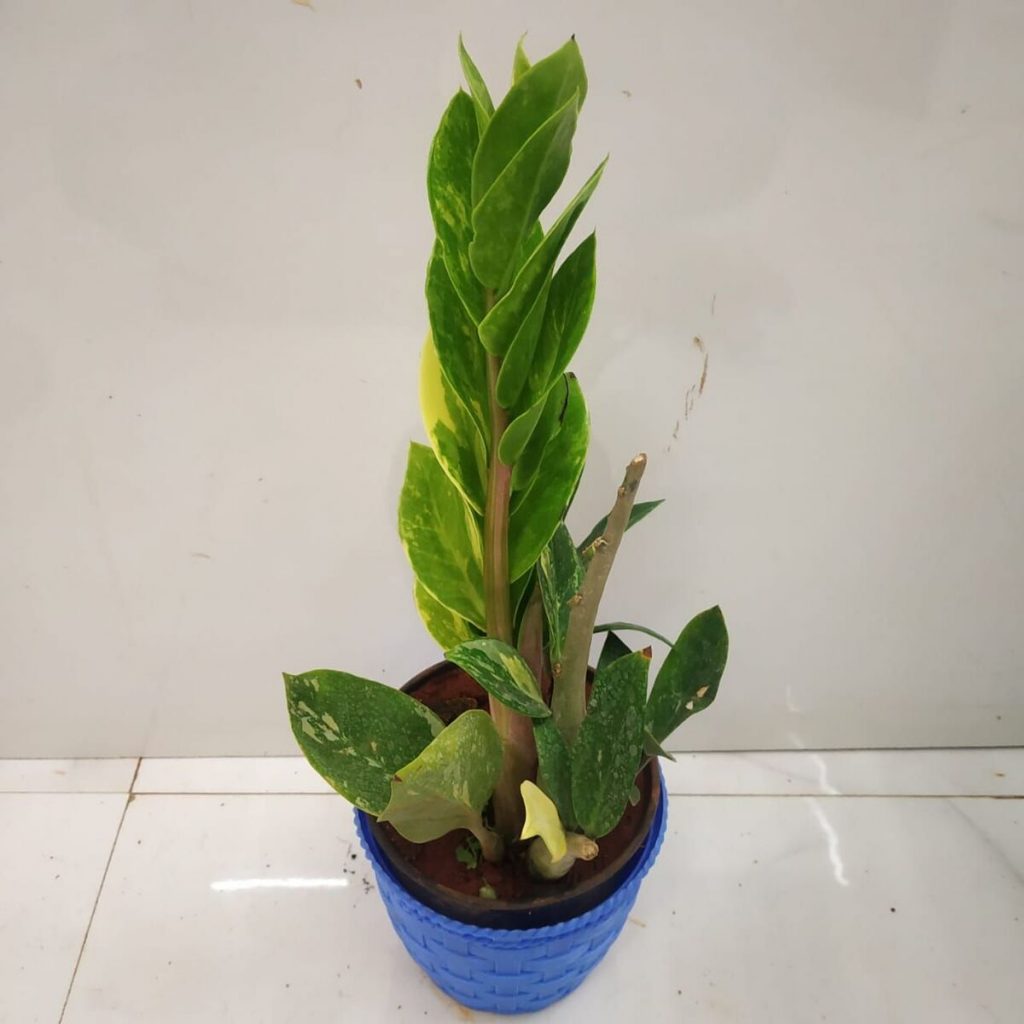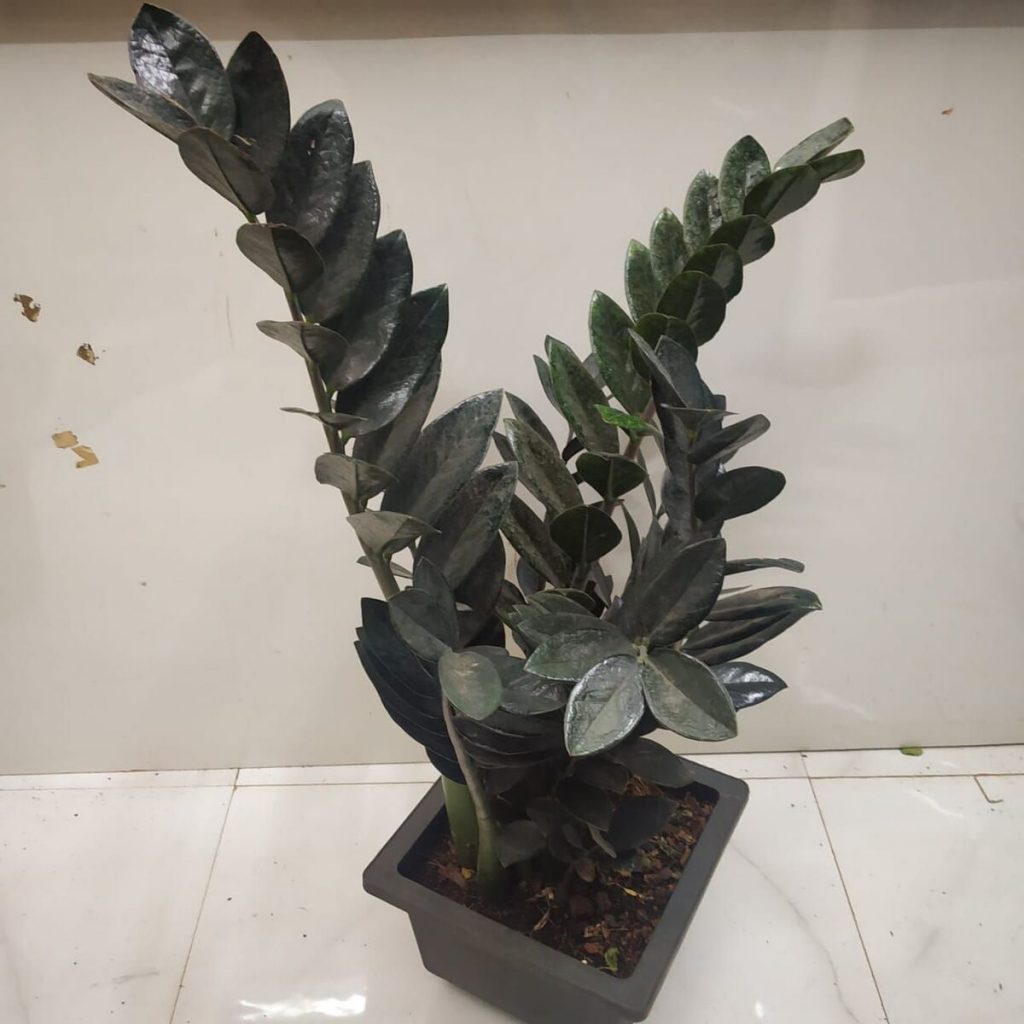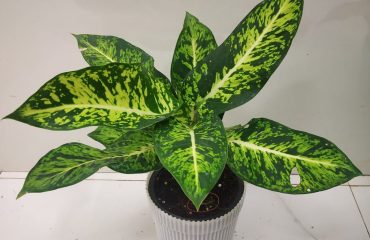How to care for the ZZ Plant (Zamioculcas zamiifolia)

ZZ plant, with its wide, attractive, dark green leaves, boasts many favorable traits for offices and homes. ZZ plant tolerates neglect, is drought tolerant, and accepts low-light conditions without throwing a fit. Its waxy, smooth leaves reflect sunlight and brighten rooms. ZZ usually grows slowly to a height and width of two to three feet so it is not a plant monster that outgrows containers quickly.

Zamioculcas zamiifolia (more commonly known as the ZZ plant) is one of the most hardy plants around and perfect for any brown thumb or new plant parent. Its nickname, “ZZ plant” derives from the first letters of its name.
How it looks:
The ZZ plant grows similar to tree plants or palms and has stems with many leaves growing from these stems. The leaves are a fleshy type which are only a couple of inches in length and an inch or so wide. Some of these stems from the same plant grow straight up and then others arch over, which may encourage you to prune odd looking stems to keep the plant looking full and shaped well.
Flowering:
The ZZ plant does produce small flowers at the base of the plant when it’s grown in it’s own habitat or outdoors. The flower is a spathe type with a spadix that is not easily seen even when it does grow – because leaves can hide the flowers and they grow at the base of the stems.
Displaying:
I can’t say the zz plant is that fussy about where it is displayed. The place where it grows just needs to be able to accommodate it’s size in diameter, which can become over 2ft once it matures – making a table area a nice place to display the plant.
Poisonous: All parts of this plant are said to be toxic if ingested by children, cats and dogs.

Watering
It’s good to know that these plants grow from thick, round tuberous rhizomes. These store water as do the thick, fleshy roots & somewhat spongy stems. It’s very important that you don’t overwater (ie: too frequently) a ZZ Plant.
I give mine a thorough watering every 2-3 weeks in summer & every 3-4 weeks in winter. Adjust accordingly for your conditions. This post & video on houseplant watering 101 gives you factors to consider.
Temperature
If your home is comfortable for you, it’ll be so for your houseplants too. Just be sure to keep your ZZ Plants away from any cold drafts as well as air conditioning or heating vents.
Light
The plant will be healthiest if it grows in bright and indirect sunlight. You can put it in the morning sun, but cover it in the afternoon because the harsh sunlight will likely burn its leaves.
One of the reasons you will love this plant is because it also tolerates low light conditions. This will slow down its growth, but won’t harm it in any way. The plant will also grow under fluorescent lights, so it is a common choice for offices.

Soil
The best choice would be a well-draining cactus potting mix. Add some perlite or sand to the mix to maximize the drainage. It is necessary that the pot has good drainage holes at the bottom to avoid any water retention. Too much water causes the roots to rot.
Fertilizer
Zamioculcas zamiifolia doesn’t need much fertilizer. This plant does grow slowly, so if you want to maximize its growth, use a diluted liquid fertilizer once per month, but do so only during the growing season. The best time to fertilize is after watering as this will prevent the fertilizer from burning the plant.

Humidity
Average house humidity will be fine with this plant, but you might have to increase it in the winter if the heating in your home makes the air too dry. You will notice the humidity is low if the leaf tips turn brown.
Potential Problems
The zz plant is a tough cookie and will survive a certain amount of neglect. The easiest mistake to make and most common is overwatering.
- Lower leaves turning yellow: A small amount of lower leaves turning yellow and falling is quite normal. If many leaves are turning yellow – check that your not overwatering.
- Leaf tips turning brown: The cause is likley to be dry air and low humidity. Misting the leaves can help improve humidity.
- Leaves turning brown: Overwatering is the the most common cause here, especially if the leaflet feels a bit damp and not dry
ZZ plants are poisonous?
ZZ’s one major drawback is that all parts of the plant are poisonous. In fact, during the 2010s there were false rumors that ZZ was so toxic that the plant caused cancer, and was so dangerous that people wore gloves when handling it. The truth? It’s toxic but not cancerous. Don’t eat it, keep it away from nibbling pets and overly curious children, and always wash your hands after handling it to avoid skin irritation.
How can I propagate a ZZ plant?

ZZ plants grow from large, thick rhizomes that resemble potatoes. These rhizomes store water, which is why the plant does well during droughts and places where forgetful owners live.
Propagating ZZ is as simple as separating these rhizomes and replanting. Another method is to take a cutting with two leaves and a bit of stem. ZZ grows quicker when more rhizomes or larger rhizomes are grown together.





